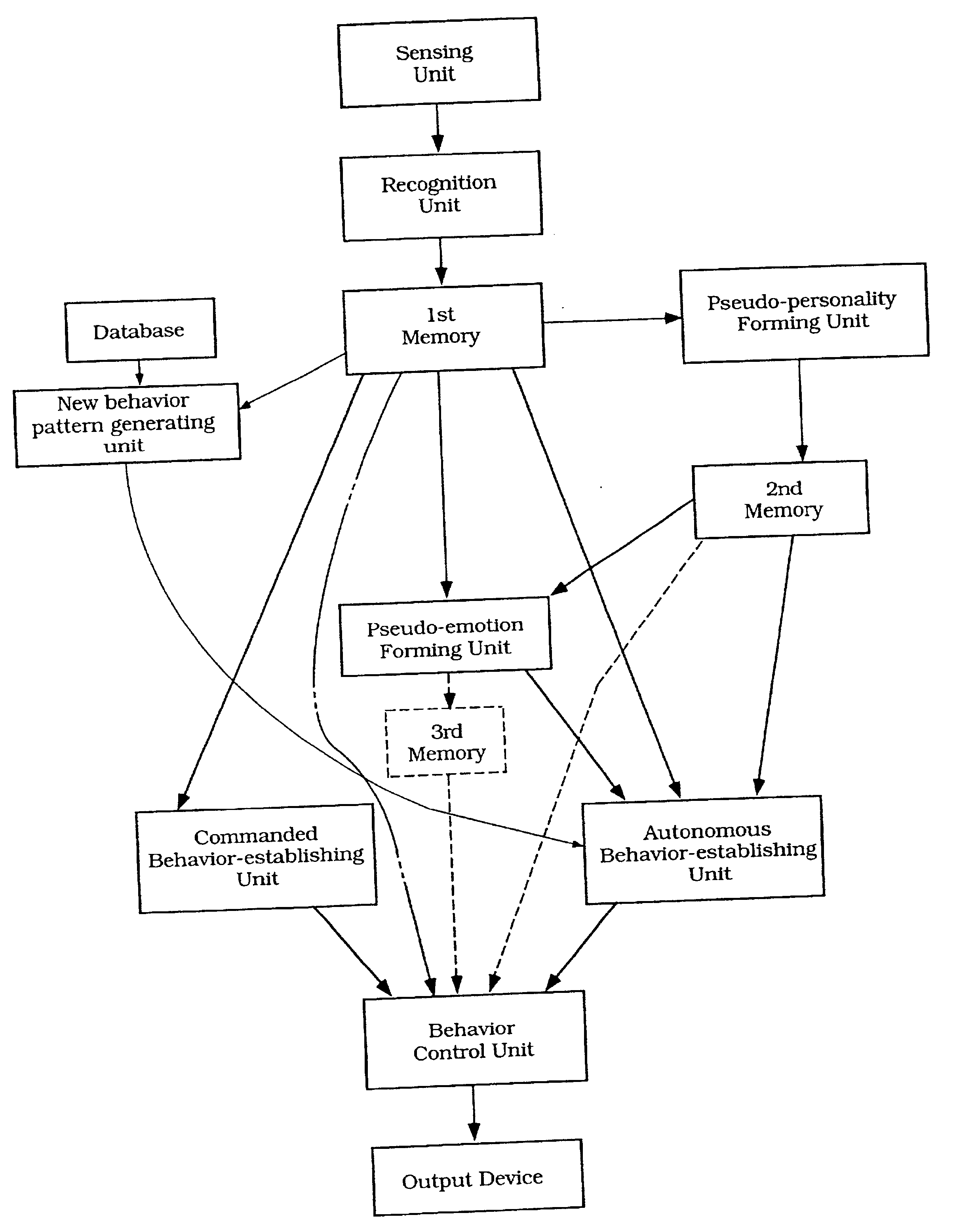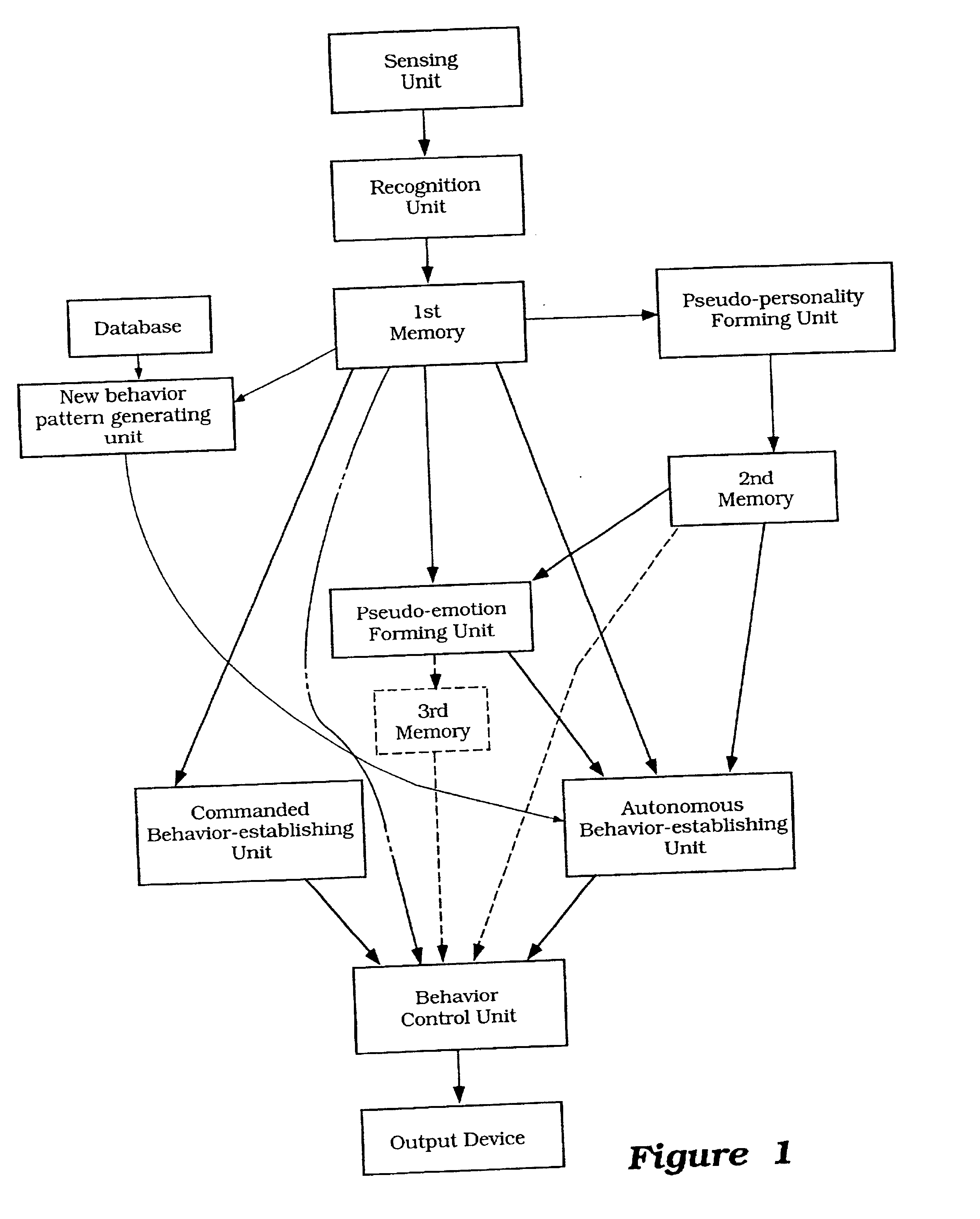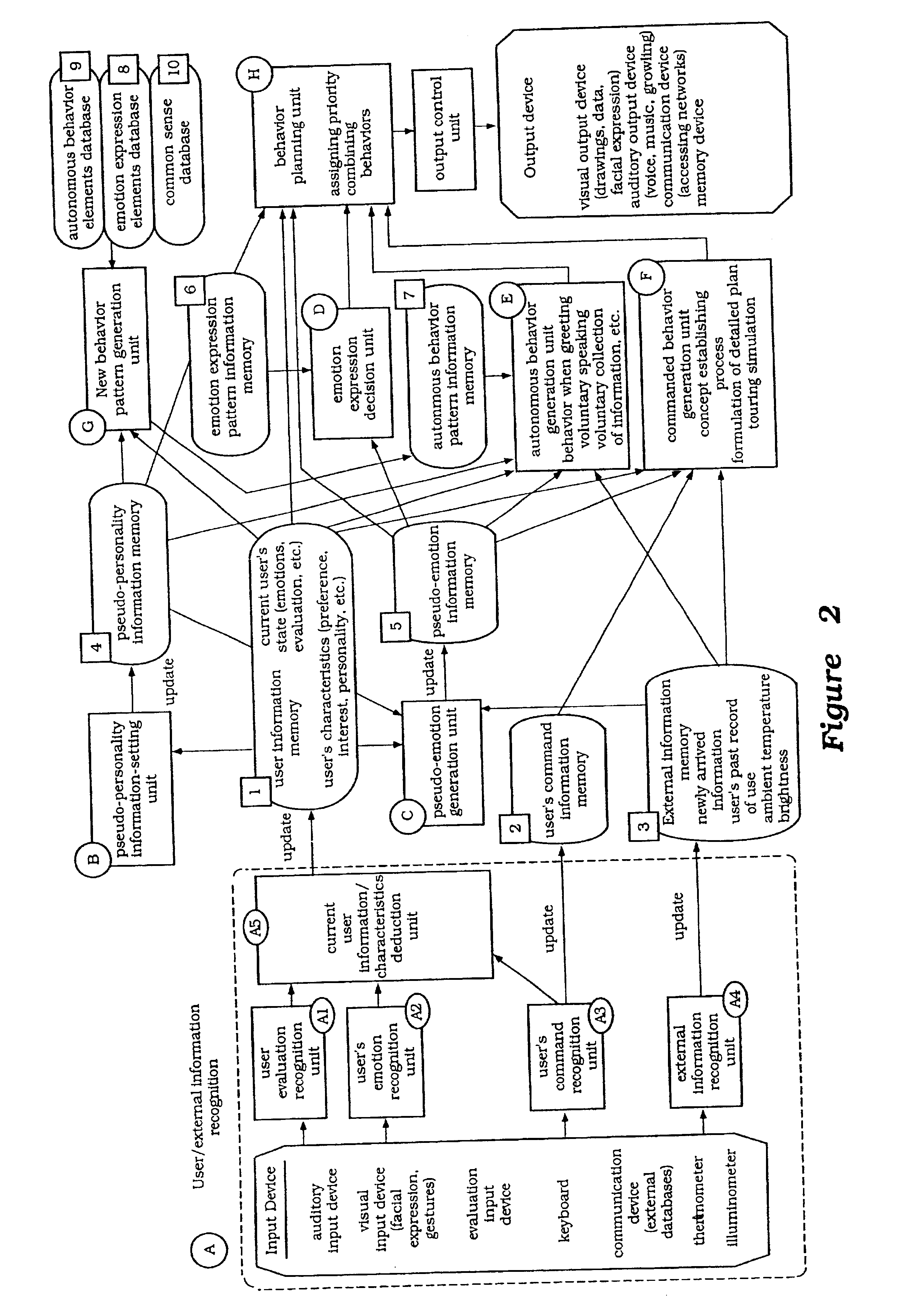Control system for controlling object using pseudo-emotions and pseudo-personality generated in the object
a control system and object technology, applied in the field of system for controlling objects, can solve the problems of difficult control of objects, inability to use objects for creative assistance to user's intellectual work or desire, etc., and achieve the effect of easing the preparation of numerous behavior patterns
- Summary
- Abstract
- Description
- Claims
- Application Information
AI Technical Summary
Benefits of technology
Problems solved by technology
Method used
Image
Examples
Embodiment Construction
[0037]The device according to the present invention is an intelligent, adaptive, user-friendly device. The term “intelligent” means that the device is able to perceive its surroundings, reason out its task, plan a course of action, and execute those actions. The term “adaptive” means both that the device is able to respond to unexpected situations while it is carrying out its plans and also that it is able to learn from its experiences and improve its performance on the tasks that it commonly carries out. The term “user-friendly” means not only that the user is able to interact in a natural manner with the device but also that the device comes to be viewed more as a “friend” or a “pet” than a “machine”. In order to accomplish these objectives, the device has a pseudo-personality and pseudo-emotions, interacts with its user on an affective level, and learns about its user, in addition to autonomously and spontaneously pursuing its own goals.
Basic Architecture
[0038]The control system ...
PUM
 Login to View More
Login to View More Abstract
Description
Claims
Application Information
 Login to View More
Login to View More - R&D
- Intellectual Property
- Life Sciences
- Materials
- Tech Scout
- Unparalleled Data Quality
- Higher Quality Content
- 60% Fewer Hallucinations
Browse by: Latest US Patents, China's latest patents, Technical Efficacy Thesaurus, Application Domain, Technology Topic, Popular Technical Reports.
© 2025 PatSnap. All rights reserved.Legal|Privacy policy|Modern Slavery Act Transparency Statement|Sitemap|About US| Contact US: help@patsnap.com



